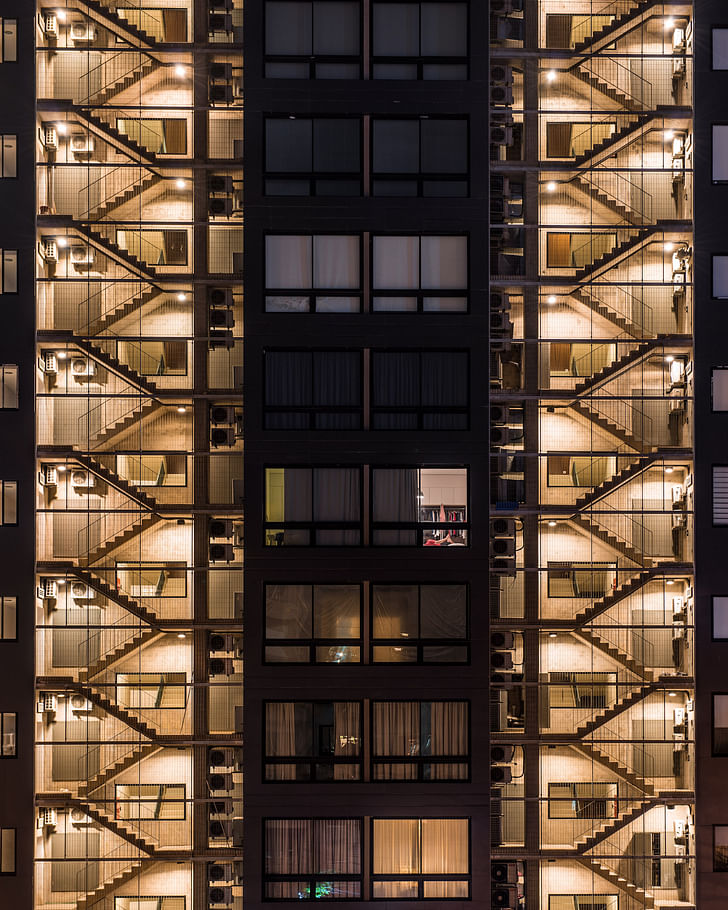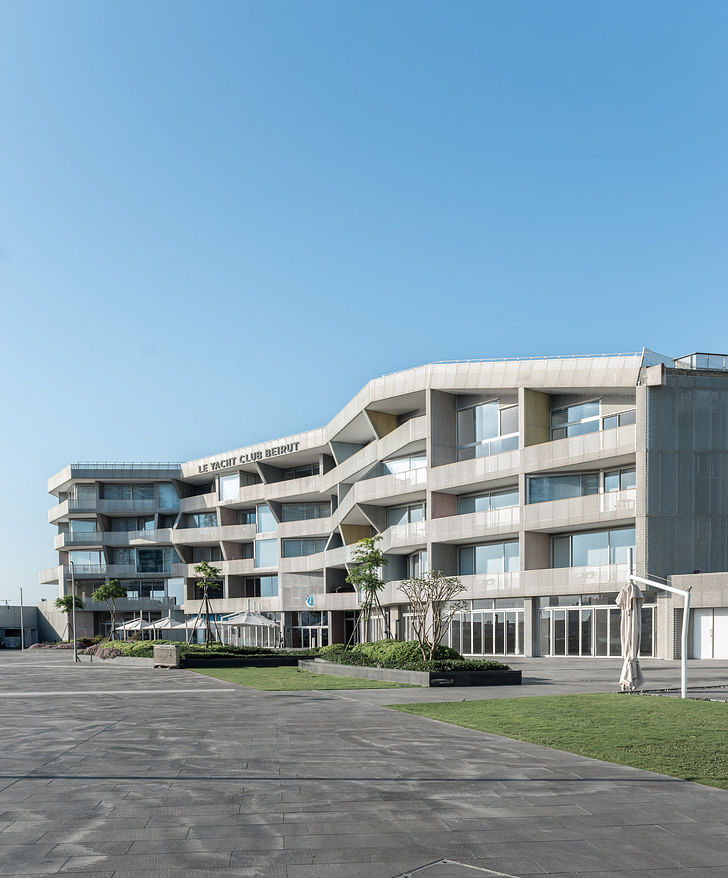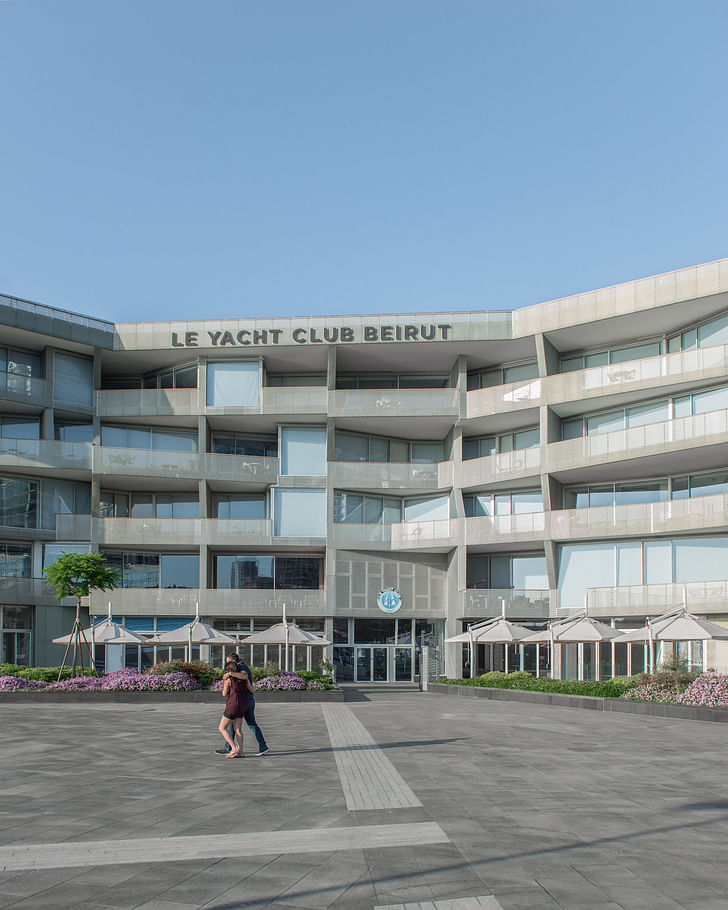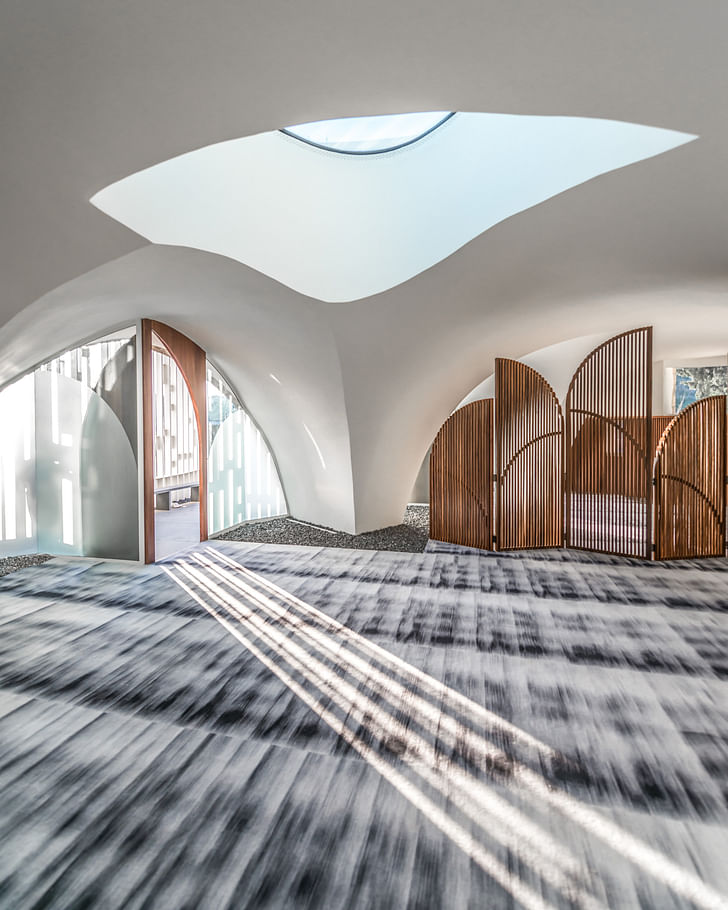

In Focus is Archinect's series of features dedicated to profiling the photographers who help make the work of architects look that much better. What has attracted them to architecture? How do they work? What type of equipment do they use? What do they think about seeing their work in blogs?
In this feature, we talk to Bahaa Ghoussainy, an architectural photographer based in Lebanon.
What is your relationship with architecture? What drew you to architecture, as a photographer?
Architecture and photography are two areas I had always been interested in. I grew up in a family that had an established photography business since the 1950’s. I spent my childhood observing my father work in and out of the studio; I learned the basics of photography shooting on film, medium and large format cameras, and spent quite a bit of time in the dark room.
I believe architecture and imagery are very co-related, and the latter is an extension of the former
It wasn’t until the last couple of years in architecture school that I was able to draw a clear connection between architecture and photography. I also took various courses on photography during my academic studies; my thesis project was entitled Architectural Imagery, and as the title clearly implies, it focused on the intrinsic relationship between architecture and the image. I believe architecture and imagery are very co-related, and the latter is an extension of the former.
As an architectural photographer, I believe it is a huge asset to have an architecture degree as it enhances spatial understanding and allows me to portray the architect’s intentions more clearly. I also still practice architecture; there are always new things to learn—I like to be involved in the design phase as it shows me the designer’s thinking process. Understanding the context a building sits in, its environment, the space and the details involved, is crucial to genuinely depict a project.
Describe how you work…who are your clients?
I mostly work with architects and designers, though I often get contacted by publishers for features and rights of usage for my images. The work process usually begins with a brief description of the project by the architect, his/her intentions and if they have any special requests. This is usually followed by a site visit for assessment, with the architect there when possible. This gives me an idea of the type of project we are dealing with—its scale, context, etc.—and I get to experience it firsthand not as a photographer, but as a user.
Before the shoot, I go over the plans, sections, and drawings to further understand the project and how it functions. When shooting I try not to miss out on any detail, I do extensive coverage of the project, I go over location and contextual shots, aerial shots where possible, interiors, details, texture and human interaction. I shoot over a couple of days to ensure that I show the project in different conditions, times and situations.


Do you mostly work in a specific region?
No. Although I am based in Beirut, Lebanon, I constantly fly to different countries for photo shoots, which gives me the opportunity of exploring new contexts.
What is your goal when capturing buildings in photographs?
The idea is to be as true to the building as possible, and portray it in its finest light. I opt to show its unique identity in the context it sits in. Working in the field myself, I am very familiar with the amount of effort and thinking it takes to conceptualize a project and determine its identity; so as a photographer, it is my job to clearly present the architect’s creation and express its unique features and beauty. People from other parts of the world are going to see photos of the project, and the first impression they get about the work is entirely dependent on the way it is portrayed in the images. That is why it is a very critical task that requires an understanding of the matter and a keen eye for detail.
The idea is to be as true to the building as possible, and portray it in its finest light

What are your thoughts about including people in your photos? Is it important to photograph a building in use, or by itself?
A building is designed to be habitable, so the way users interact with it is part of the building itself. It is important to show how well people adapt to the building, and how the building, in return, adapts to its context. Sometimes traces of people, or just a sense of human presence also tells a story in a picture. So it really is a matter of conditions.
What are your favorite pieces of equipment?
No piece of equipment can substitute the eye as the most important tool for a photo; all the gear is just a tool to transfer my perception of a space onto a medium.
From a technical standpoint, I think tilt-shift lenses are quite helpful when shooting architecture. They offer new possibilities that would otherwise seem unachievable when using regular lenses. I like to maintain optimum image quality, so if I feel there is room for improvement, I upgrade my gear accordingly. In a way, you cannot really pick a favorite, technology is constantly moving at a very fast pace.
Do you work alone?
On most shoots I have an assistant with me. I like to edit my photos myself rather than have somebody else do the work. That is because when I shoot I almost always have an idea about how the final image is going to turn out, and my photos usually undergo an extensive editing process, so I prefer to do the work myself.
How do you feel about seeing your images on blogs and websites?
When my images make it to websites and magazine covers it means that I have succeeded in delivering the intended message, and the photos are up to certain standards, so that is always a great reward for the work I have done and the effort I put into it. It is also rewarding for the architect, because for most people, the only experience they get of a building is through photographs, and hopefully some will be encouraged to visit the project themselves. I see it as a contribution to the work that I have the privilege of doing.
Bahaa Ghoussainy—Bio:
I started out as a portrait photographer at my father’s studio at a young age. I built up many years of experience and finally dedicated my skills entirely to architecture photography. While pursuing my architecture degree at the Lebanese American University, I started shooting projects that I find appealing. One of my earliest experiences shooting architecture was during an International Studio and Workshop in New York. It wasn’t long before I started getting commissioned shoots and I absolutely fell in love with the field. It is a very enjoyable process for me and it is the perfect combination of the two things I am most passionate about. I am currently based in Beirut, Lebanon, and I hope my work continues to be published worldwide.
No Comments
Block this user
Are you sure you want to block this user and hide all related comments throughout the site?
Archinect
This is your first comment on Archinect. Your comment will be visible once approved.